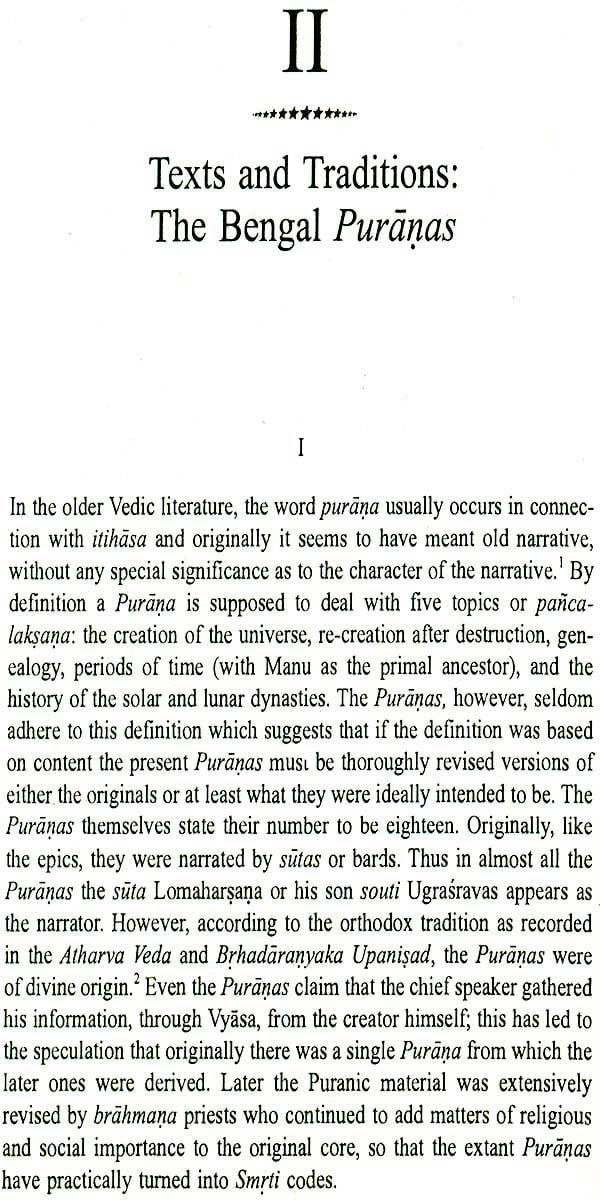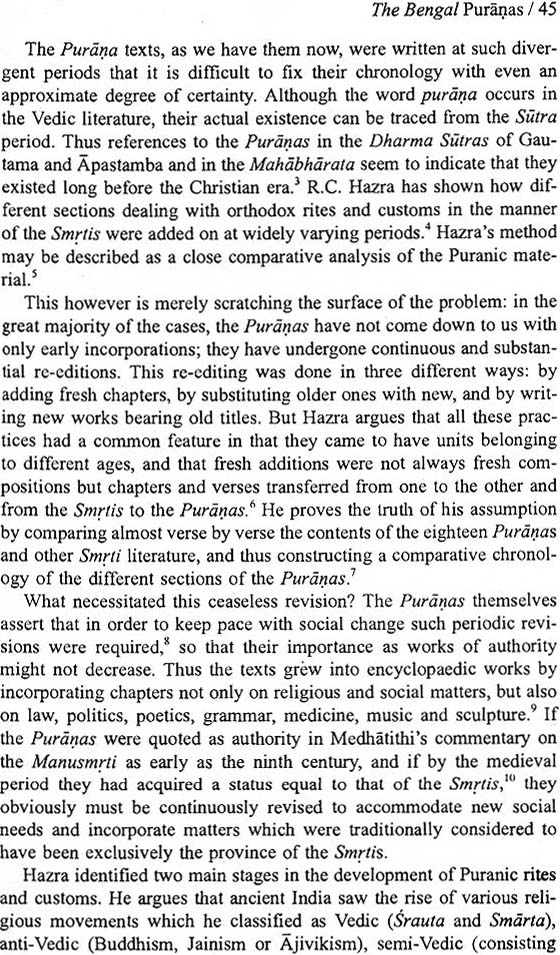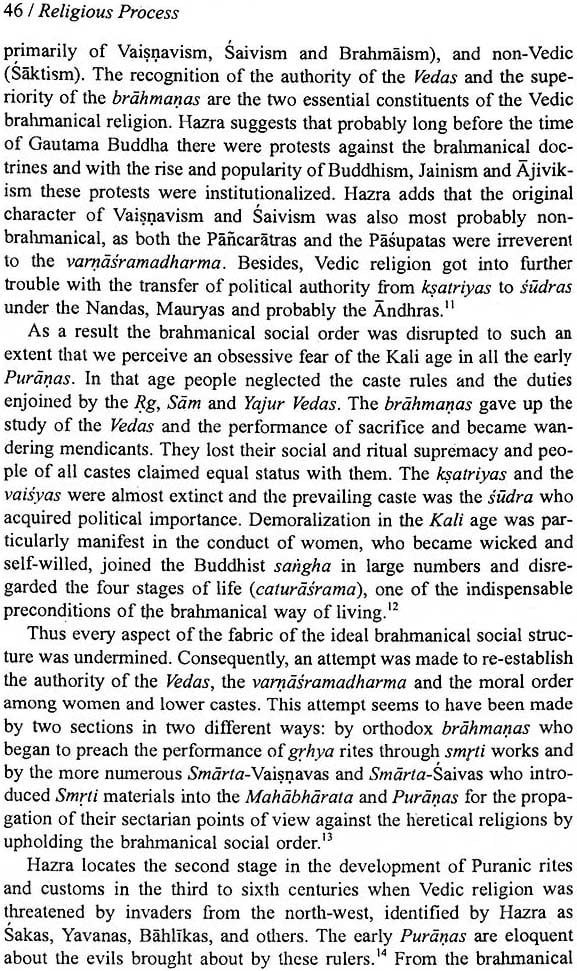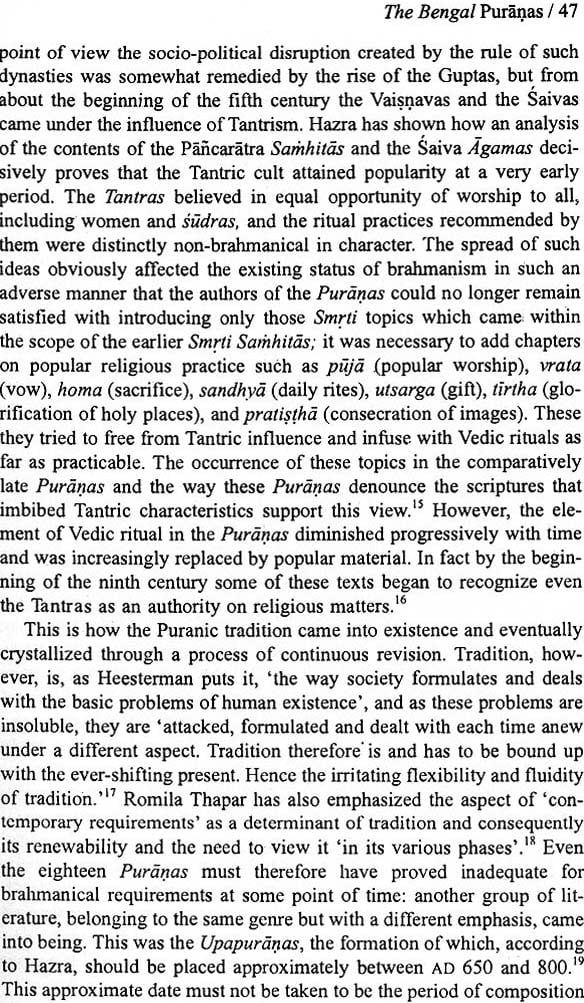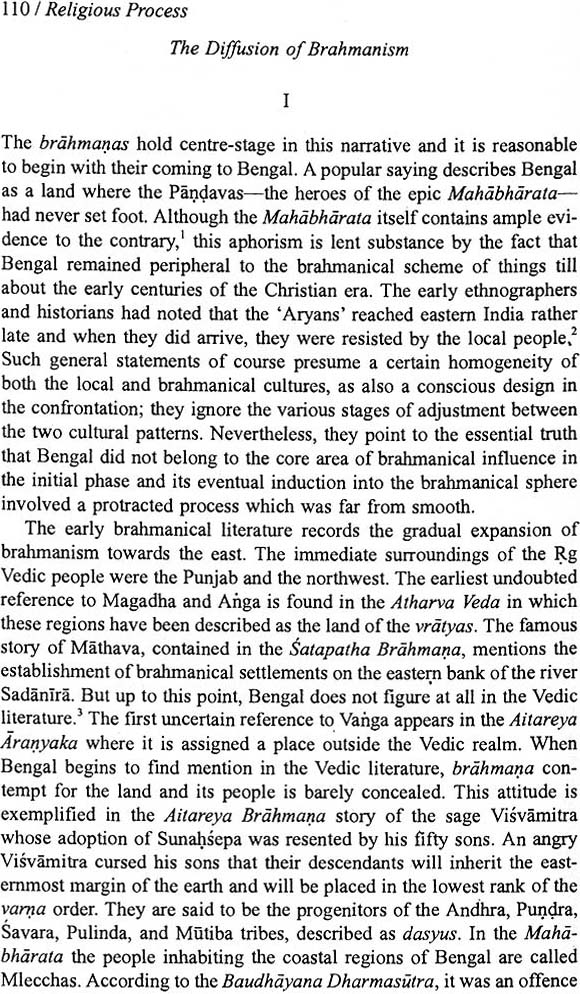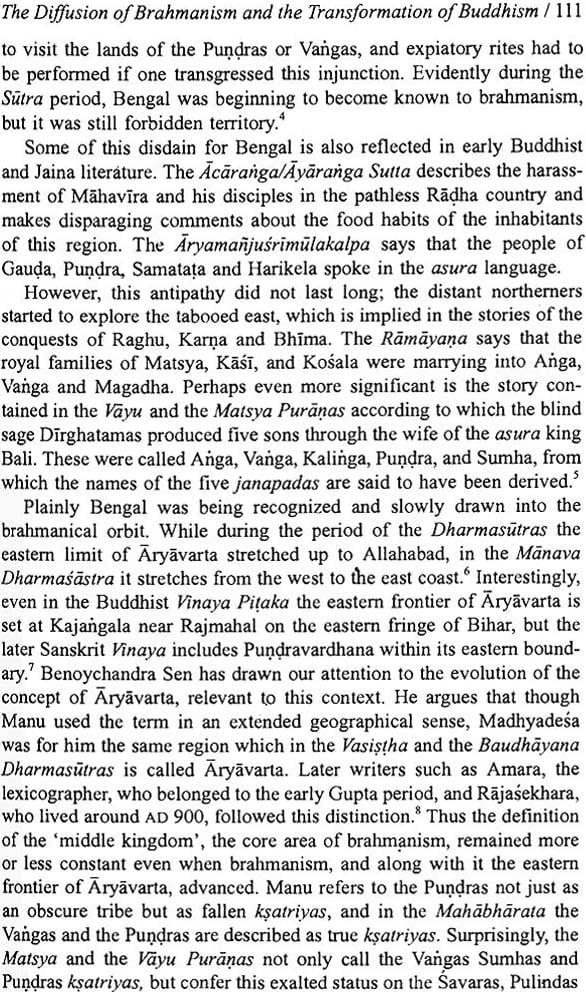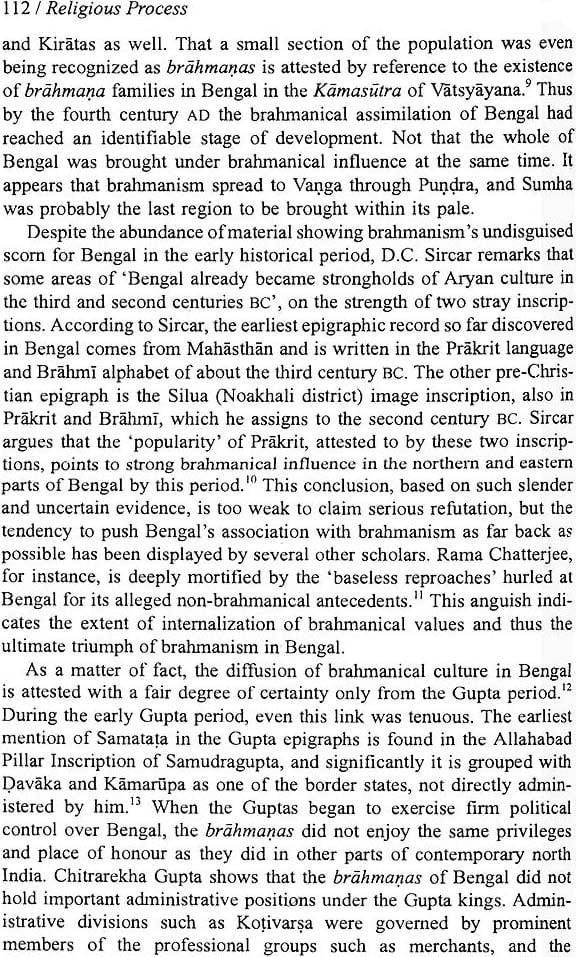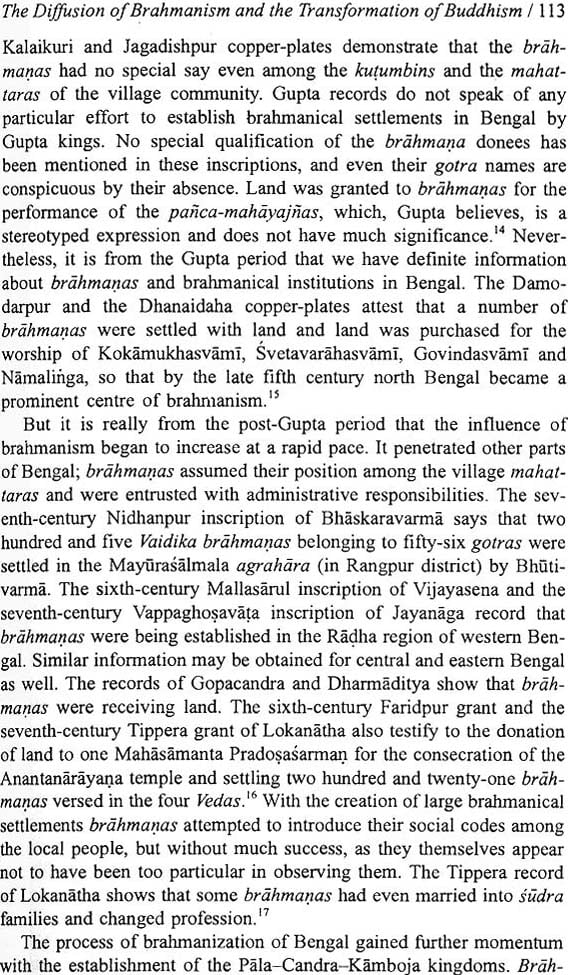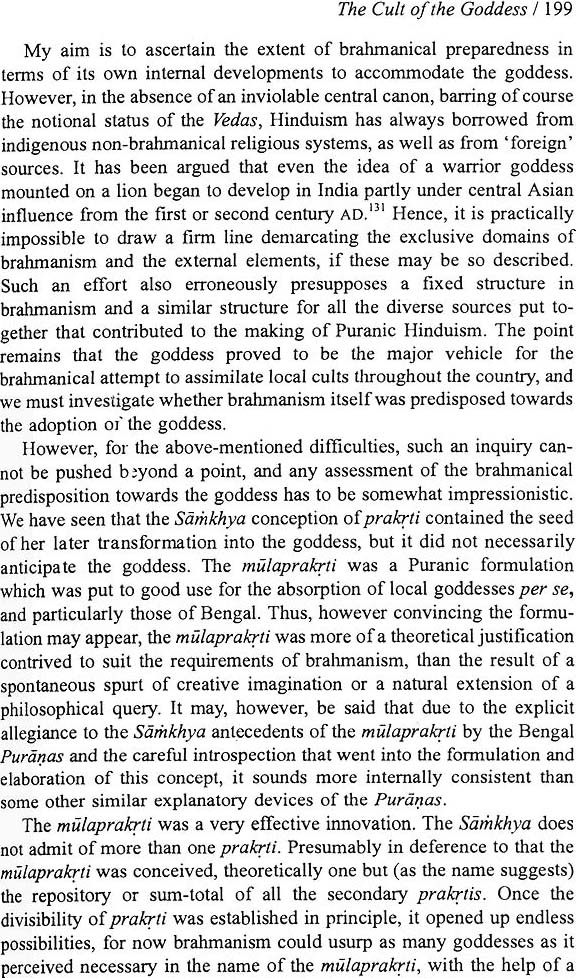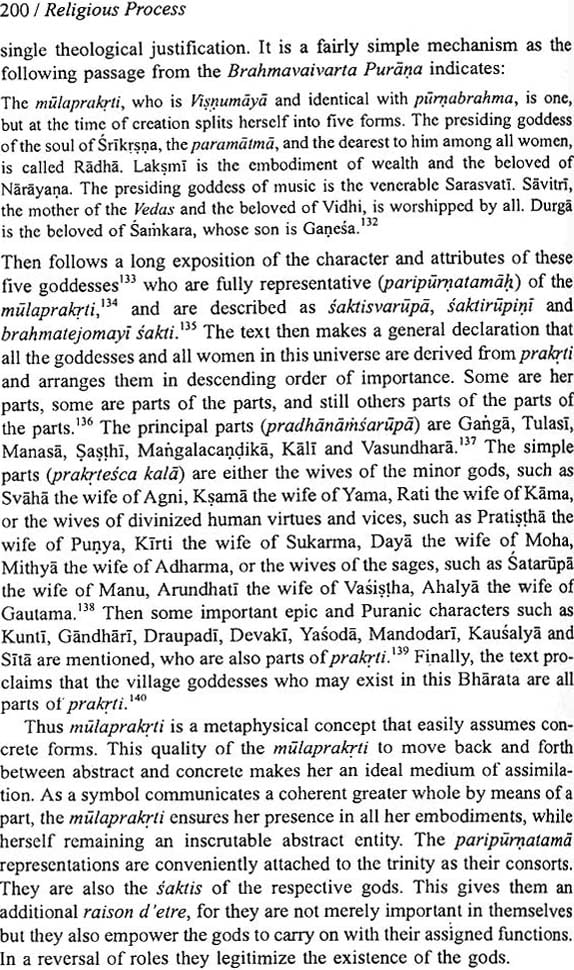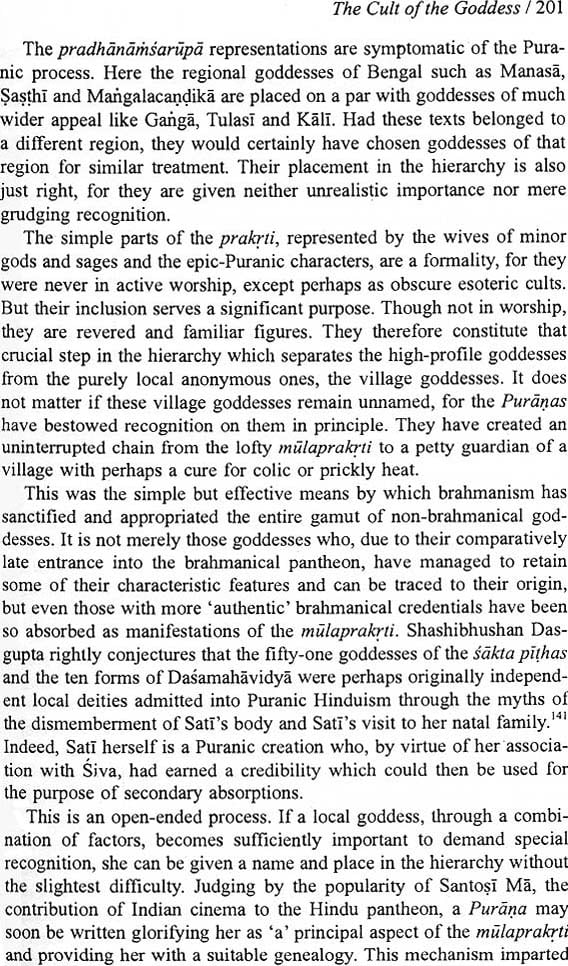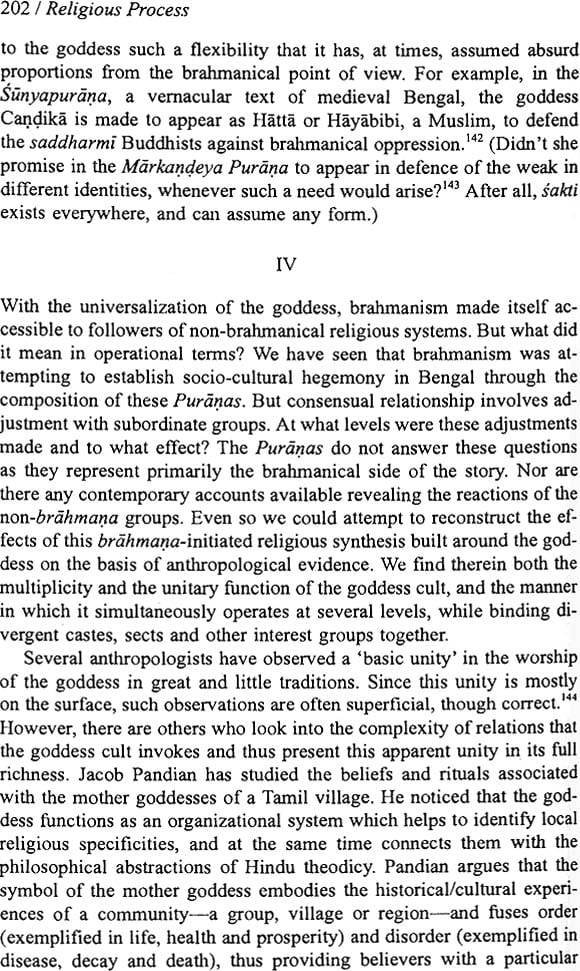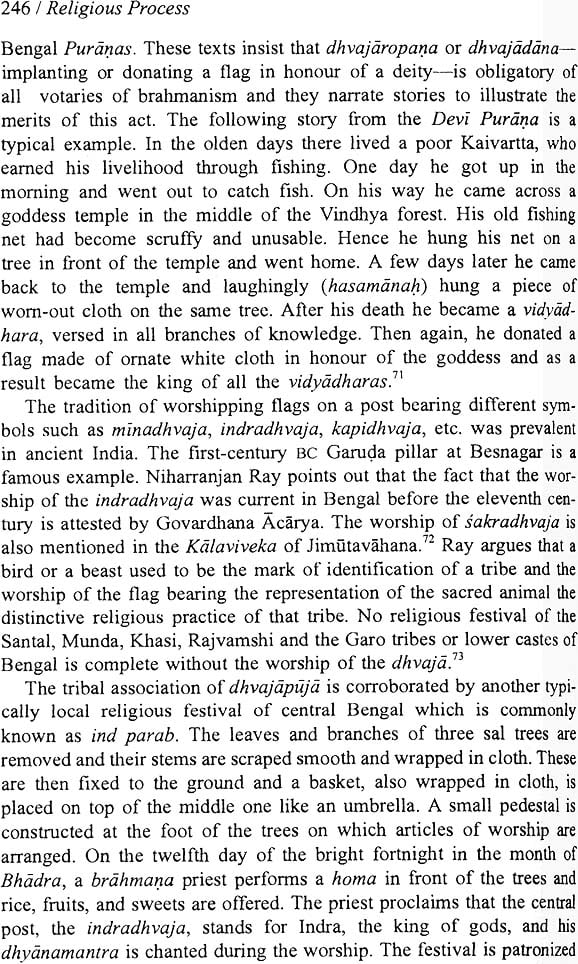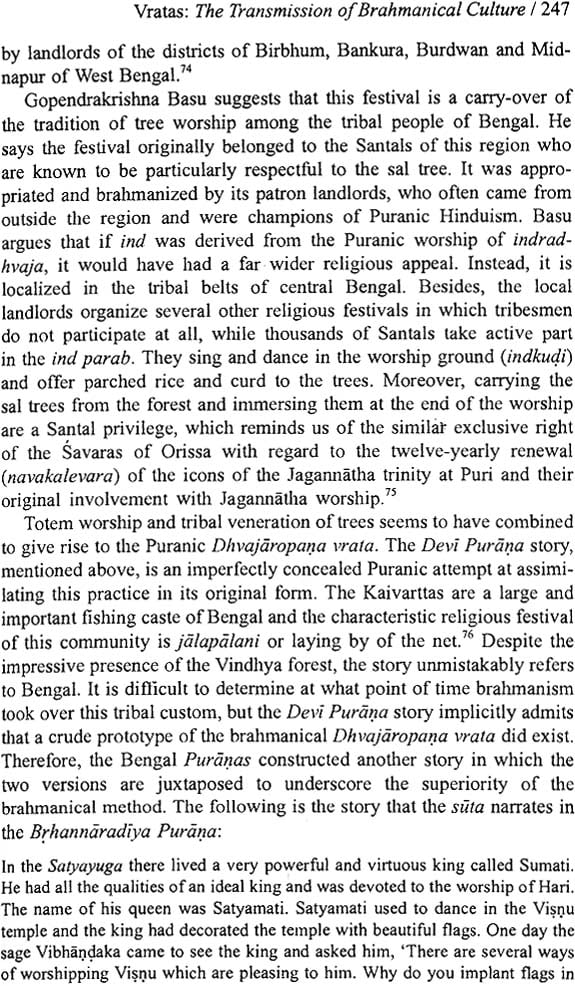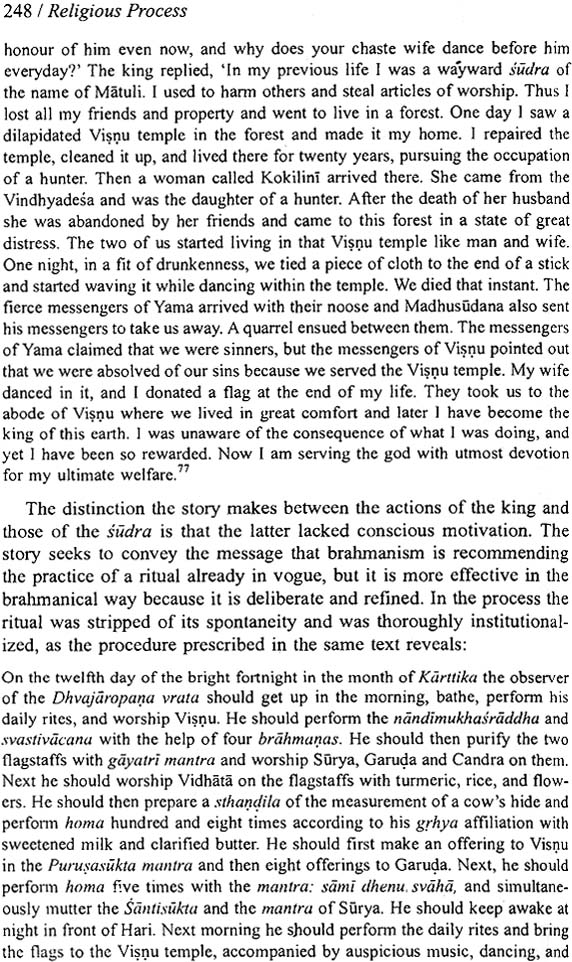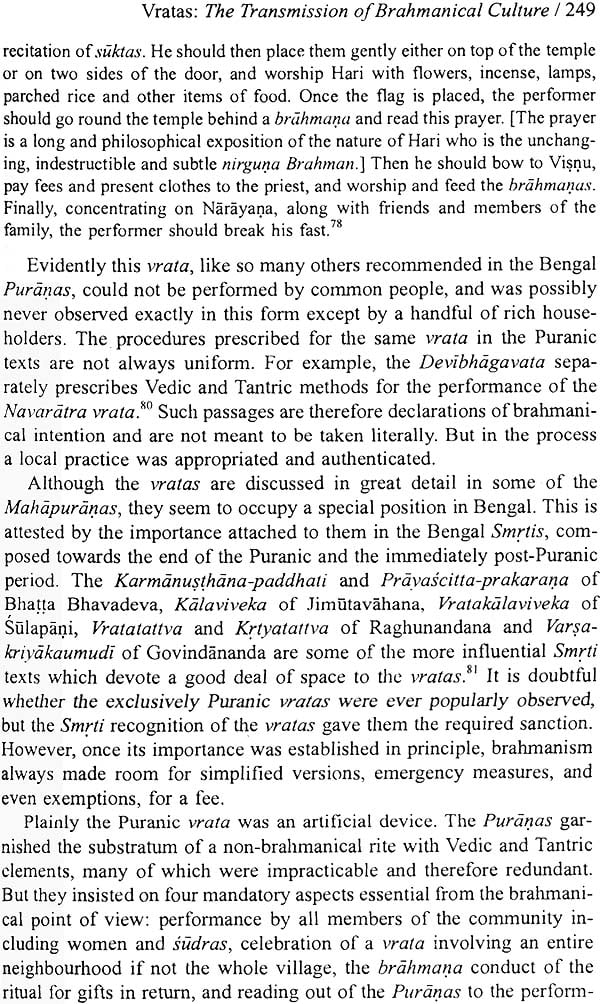
Religious Process (The Puranas and the Making of A Regional Tradition)
Book Specification
| Item Code: | NAL705 |
| Author: | Kunal Chakrabarti |
| Publisher: | Oxford University Press |
| Language: | English |
| Edition: | 2021 |
| ISBN: | 9780199482542 |
| Pages: | 377 |
| Cover: | Paperback |
| Other Details | 8.5 inch x 5.5 inch |
| Weight | 0.33 gm |
Book Description
This book traces the evolution of a process of interaction between brahmanism and the indigenous social groups of Bengal during the early medieval period. Following the logic of cultural negotiation implicit in the regional Puranas, the book unravels a pattern that governed this relationship of reciprocity, contestation and domination. Two significant methodological issues have been addressed- the manner in which didactic Sanskritic texts can be read for the reconstruction of early Indian history, and the application of contemporary anthropological concepts to such texts to help elucidate cultural contestations in pre-modern India. Focussing on Bengal, Chakrabarti examines a civilizational process fundamental to the unfolding of Indian history.
The Bengal Puranas adopted the cult of the goddess as the appropriate medium of assimilation of local cultural forms and it was on the shared understanding of a variously represented common cult that the earliest foundation of Bengal's regional tradition was laid. The book argues that the Puranic synthesis in Bengal generated for the first time the necessary cultural resource that enabled the diverse communities to acquire a regional cultural identity.
Rigorously researched and conceptually rich, this study will become a major reference for all future studies of Hinduism.
About the Author
Kunal Chakrabarti is Professor of Ancient History at Jawaharlal Nehru University, New dlehi.
When Bhabani, the protagonist of the novel Ichamati, returns to Bengal after his religious apprenticeship in the 'West' studying the Vedas and Upanisads, he finds to his dismay that the Vedic tradition forms no part of Bengali religious culture. There are only the songs of Mangalacandi, the bhasan of Manasa and the marriage of Siva. At best, the Bengalis are familiar with the epics. How accurate is this depiction of the state of religion in Bengal? Is it correct to say that the Vedic tradition never sufficiently penetrated there, so that a Bengali seeking 'the wisdom of Hinduism' had to travel to the proverbial 'West' (the Gangetic valley mainland) even in the nineteenth century? In other words, did Bengal create and preserve a distinct socio-religious tradition, one distinguish- able from the dominant high culture of Vedic Hinduism? In this study of the Bengal Puranas, I propose to investigate this problem. In particular, I intend to examine the process by which the religious tradition of Bengal came into being.
While lndologists have tended to focus on the overarching Sanskritic tradition, social anthropologists have remained concerned with the study of Indian village societies. Thus both disciplines have tended to ignore the regional traditions of South Asia which, in my opinion, embody the cultural continuum of Indian civilization. It has been suggested that this neglect is primarily due to an uneasy feeling that the regional traditions represent neither the unspoilt Sanskritic tradition nor popular culture in its pure form, but a distorted provincial variant of both. But it is the making of regional traditions and the formation of regional identities which reveal the pattern of socio-cultural interaction between the pan- Indian and the local levels, so crucial for an understanding of the long- term historical processes in India.
To date the only significant work on a regional tradition in India, which is based on the crystallization of a religious complex, has been a volume on Jagannatha. However, while Orissa developed a central cult focus and the factors that contributed to the construction of its regional tradition revolved around the temple of Jagannatha, Bengal singularly lacked a dominant symbol supported by the regional state, and its many local traditions, although they converged on a number of autonomous goddesses, were fragmented. It was only when brahmanism established its social order in Bengal by the early medieval period that a semblance of homogeneity appeared in this variegated cultural landscape. The account of this process of cultural interaction is contained in a set of texts called the Upapuranas, many of which were composed in Bengal roughly between the eighth and the thirteenth centuries AD. Thus Bengal, like other regions, charted its distinct course. There is never the- less an essential similarity in the process of formation of regional traditions in India and therefore my conclusions may also apply to areas beyond Bengal.
Despite the abundance of material, the Bengal Puranas have been persistently ignored as evidence for the reconstruction of the early history of Bengal. The date, provenance and negotiations involved in the process of codification of the Bengal Puranas are discussed in the next chapter. Here I deal with historiography in an attempt to explain why historians have remained so reluctant to accept the Puranas in general and the Bengal Puranas in particular as a valid and reliable source of historical information.
In a recent article Gregory Schopen has argued that the early European historians of Indian Buddhism had relied more or less exclusively on literary evidence, although archaeological and epigraphical materials, reflecting the actual beliefs and practices of the lay Buddhists, were available in plenty. He suggests that this curious preference may have been due to an assumption that 'real religion' is located in the 'Word of God' and not in the material objects of its practitioners. Schopen concludes that this assumption derives from the sixteenth-century Protestant polemic on 'true' religion that was thoroughly absorbed by the Western intellectual tradition.
Although the Western intellectual tradition exhibited the same attitude to Vedic religion, it was the reverse in the case of the Puranas, For one thing, in brahmanism 'direct' divine revelation ended with the Vedas. The later Vedic literature, through association, also acquired a high degree of sacredness. Yet, even as the gods continued to speak through the mouths of the brahmanas, the later texts were too numerous to constitute an authentic corpus of scripture of a status acceptable to all votaries of brahmanism. Thus while the brahmanical law codes acquired the status of remembered truth, the Puranas came to occupy a curious position with neither the unquestioned sanctity of the Vedas nor the decisive normative significance of the Smrtis. European scholars who began to write about the Puranas from the mid-nineteenth century to some extent treated these texts as repositories of fantastic tales about gods and demons which contaminated the high seriousness and idealism of the Vedic religion. H.H. Wilson's translation of the Visnu Purana contains a long preface which may be considered the first systematic and scholarly statement in English on Puranic literature (although incidental observations on the Puranas had already been published by Cole- brook and Ellis in the Asiatic Researches). In his preface Wilson remarked that the Puranas were sectarian in character, which indeed is true, but the conclusion he drew from this was that these texts were composed by 'pious frauds for temporary purposes', 'in subservience to ... sectarian imposture', and therefore not authoritative about Hindu beliefs as a whole. This seems to be a little baffling in view of the fact that two decades later Wilson, in his major study of Hindu beliefs and practices, had classified practising Hindus into three major Puranic sects, the Saivas, the Vaisnavas and the Saktas. Perhaps his suspicion about the authenticity of the Puranas is symptomatic of the approach of early scholars to the stages in the evolution of Hinduism.
In 1855 E.W. Hopkins published his study on the religions of India with detailed studies of the Rg Veda, brahmanic pantheism and the Upanisads. The section on 'Hinduism' contains an account of Visnu and Siva, primarily based on the epics. Significantly, Wilson considered the two epics as 'the safest sources for the ancient legends of the Hindus', after the Vedas. Clearly, the unwieldy corpus of Puranas with conflicting claims about their names and numbers and uncertainty about their dates, had made the Puranas less acceptable to these scholars than the epics. Hopkins had devoted a short, indifferent chapter to the Purdnas. It dealt with the early sects, the religious festivals, and the formation of the Trinity. His preference for Vedism as the true religion of the Hindus, compared to the later debasement, is inescapable.
A number of important monographs were published on the subject in the late 1870s and early 1880s. M. Monier-Williams' study of Hinduism makes a distinction between Vedic religion, brahmanical law and domestic usages on the one hand, and Hinduism on the other, which best expresses Brahmanism after it had degenerated-to wit, that complicated system of polytheistic doctrines and caste usages which has gradually resulted out of the mixture of Brahmanism and Buddhism, with the non-Aryan creeds of Dravidians and aborigines. Hence Hinduism [sic) is something very different from Brahmanism, though the one is derived from the other.
| Acknowledgements | vii | |
| Abbreviations | x | |
| 1 | Introduction | 1 |
| 2 | Texts and Traditions: The Bengal Puranas | 44 |
| 3 | Cultural Interaction and Religious Process | 81 |
| 4 | The Diffusion of Brahmanism and the Transformation of Buddhism | 109 |
| 5 | Appropriation as a Historical Process: The Cult of the Goddess | 165 |
| 6 | Vratas: The Transmission of Brahmanical Culture | 234 |
| 7 | The Making of the Regional Tradition of Bengal | 288 |
| Bibliography | 338 | |
| Index | 362 |
